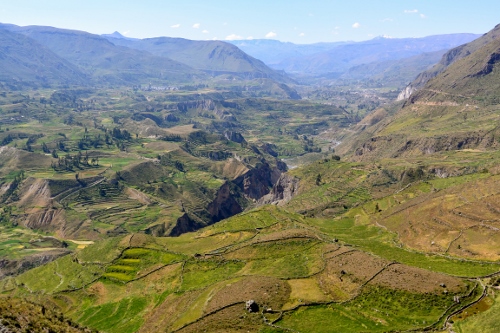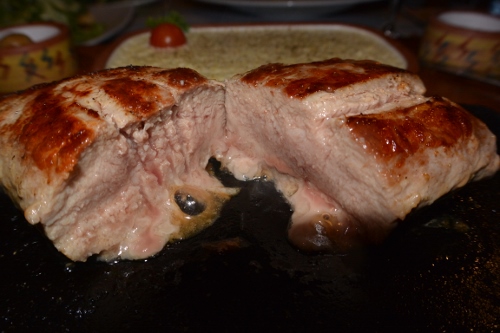Alpaca, the fluffy South American relative to the camel, is famous for the soft wool produced from its fur. However, these cute critters have long since been a source of protein in their native lands of the high Andes. This red meat is lower in cholesterol than chicken, and higher in protein and iron than beef.
I first tasted alpaca in Arequipa, Peru. The stunning colonial city is surrounded by volcanoes and is a popular place for tourists to stay while exploring Colca Canyon—home of the massive and majestic Andean condors. Arequipa is also known for its culinary delights and boasts numerous restaurants specializing in local dishes such as rocotto relleno (stuffed peppers), cuy (guinea pig), and alpaca.

Alpacas were domesticated in Peru by pre-Incan societies and reared for their fur and luxurious meat. Due to the small amount of meat each animal yields, it was primarily eaten at celebrations or by the upper class. It is still considered a delicacy, and I was excited to give it a try.
My friend and I went to acclaimed restaurant Zig Zag, located in Arequipa’s historic city center just up the street from the gorgeous main square. We went early to get a table without a reservation. The popular upscale eatery is aesthetically pleasing as soon as you walk in, with its curved stone celling and antique iron spiral staircase.

The menu is a fusion of traditional Andean and Alpine foods, combining high mountain flavors with energy-packed ingredients. Though not cheap, in comparison to U.S. prices, you can dine like Incan royalty for the fraction of the cost. The owners take pride in informing their customers how much healthier alpaca is than other meats, and include a chart comparing fat and cholesterol of various animals.
Zig Zag serves their meat and fish cooked on volcanic stone slabs; it’s a really fun presentation with accompanying sauces on the side. The alpaca steak was a light color, similar to pork. It was still sizzling as I cut into the medium-rare fillet (alpaca is best served medium-rare to keep it from drying out). It had a surprisingly delicate flavor, not at all the gaminess of venison or lamb as I was expecting. Lightly seasoned to highlight the integrity, there was a lingering sweetness to the sumptuous cut that made me lick my lips in enjoyment. Alpaca is extraordinarily appetizing and doesn’t weigh you down after.

I felt rather strange sitting there, adorned in brand new baby alpaca wool as I was eating the meat of the same animal. However, I had to remind myself that I eat steak while wearing leather and don’t think twice about it. It’s just a matter of dinning on an exotic animal that made me more aware.
The proprietor, Carola Behrendt, later informed me that the organic farm they obtain their alpaca from is located in Colca Canyon amongst the terraced valleys. The animals are utilized for their wool as well as their delectable meat.
Across the U.S. and Canada, alpaca farms are growing in popularity and awareness of this red meat alternative is on the rise. If you get a chance, I highly recommend tempting your palate with some scrumptious alpaca.
Annie Merkley is a freelance journalist, banjo strummin’ songstress, traveler by simple means, poet, and dreamer of dreams and things. She has worked in restaurants from Athens, Georgia to Ischia, Italy, from New York City to Cornwall, England. From serving to being a cook, baker, bartender, barista and manager she’s seen the insides of restaurants at every angle. Annie is on an around the world trip for the year of 2015 and writing about it along the way.